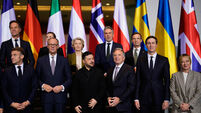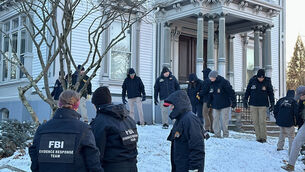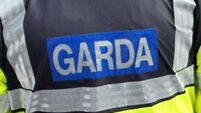Terrorism suspect 'co-operating' with US authorities in al-Qaida probe
The 34-year-old Ohio truck driver has acknowledged that he met Osama bin Laden at a terrorist training camp in Afghanistan and worked with other top al-Qaida officials, according to court documents.
When Faris's ex-wife Geneva Bowling found out he had met bin Laden, she said she felt "physically ill".
"It just doesn't seem like the person I knew," she said. "I don't feel well. ... I'm still in shock. I just need some time for it to sink in".
"This case highlights the very real threats that still exists here at home in the United States of America in the war against terrorism," Attorney General John Ashcroft said in Washington.
"While we are disabling al-Qaida, we don't believe it is disabled."
Faris has acknowledged that he met bin Laden in 2000 at an al-Qaida training camp in Afghanistan and provided operatives there with sleeping bags, cell phones and other assistance, court documents show.
Faris pleaded guilty on May 1 to providing material support to terrorists and conspiracy to provide support, according to documents unsealed on Thursday in US District Court in Alexandria, Vancouver.
Authorities said Faris received attack instructions from top terror leader Khalid Shaikh Mohammed for what they suggested might have been a second wave planned for New York and Washington to follow the attacks of September 11, 2001.
Faris, could face 20 years in prison and up to $500,000 in fines. Sentencing was set for August 1.
The Kashmir native arrived in the US in May 1994 and became a naturalised citizen in December 1999.
In Columbus, former neighbours described the independent truck driver, who was often on the road, as unapproachable and aloof.
"That someone even associated with this craziness is right here in Columbus, it's sad," said 26-year-old Negla Ross, his former next-door neighbour.
Those who interacted with Faris, also known as Mohammed Rauf, recalled a man who sometimes lost his temper but also liked to laugh. He had been working in Columbus for several years.
Records show that under his alias, he was married to Bowling from 1995 to 2000 and lived with her in a small home in Columbus.
Although the senior operative is referred to only as "C-2" in the documents, a US law enforcement official speaking on condition of anonymity identified him as Mohammed.
He was captured in Pakistan on March 1 and is said to be providing interrogators with a wealth of information about al-Qaida's global reach.
According to a government statement that Faris signed, an al-Qaida leader instructed Faris to obtain "gas cutters" probably acetylene torches, that would enable him to sever the cables on "a bridge in New York City" that officials said was the Brooklyn Bridge.
To avoid government detection, Faris was told to refer to the cutters as "gas stations".
Mohammed also told Faris that he should obtain heavy torque tools code-named "mechanics shops" that could be used to derail trains in the US, the affidavit says.
The court papers refer to New York and Washington but provide no further detail about time or location of an attack.
The statement says that Faris researched the Brooklyn Bridge on the internet and travelled to New York in late 2002 to examine it, finally concluding that "the plot to destroy the bridge by severing the cables was very unlikely to succeed".
None of the allegedly planned attacks was carried out.
Faris' meetings with al-Qaida took place in 2000, 2001 and early 2002 in Afghanistan and Pakistan, the government statement says.
Faris's original contact with al-Qaida came through a second senior operative, named only as "C-1" or "bin Laden's right foot", whom the US says Faris had known since the Soviet-Afghanistan war in the 1980s.














